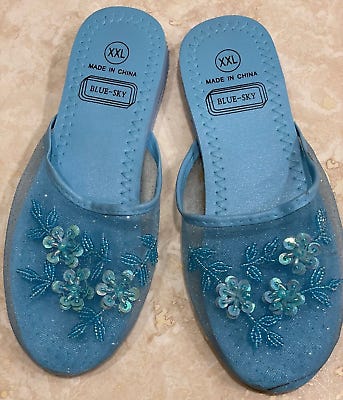What if I told you this grease-stained t-shirt was over $100?
Fashion loves working-class aesthetics but not the people who originate them.
The internet won’t rest until they find out where Carmy from The Bear gets his white tee shirts from. Season three of the wildly popular show set in a Chicago kitchen follows a rag-tag crew of sandwich shop cooks as they fixer-upper their grab-and-go sandwich joint into an upscale restaurant. The Bear is grabbing attention not just for its display of chaotic kitchen life, complete with eccentric personalities with tumultuous backgrounds, but for the lead’s signature styles inspired by real-life cooks. Grease-stained white tees, black dickies pants, jeans, bandanas, track pants, and other food service staples never looked sexier. If you’ve ever worked in food service you know there is nothing glamorous about the environment or the uniform, but seeing it on the big screen has the fashion world obsessed with these line-cook-coded aesthetics. But instead of a Hanes white tee or a Tredsafe clog, it’s Thom Browne aprons and Birkenstock Bostons.
The Bear is much more than a show about cooking, it's becoming one of the chicest, well-styled casts on TV. Sleuths have discovered that Carmy is sporting a Merz B. Schwanen white t-shirt, which is a German basics company, that goes for upwards of $100. Fashion bleeds into every sector of life because, well, no matter what you do you have to wear clothes while doing it. While most working people prioritize and seek out function in their wardrobe, high fashion’s fixation is on workwear itself and getting the working person look without the work part. The industry is no stranger to borrowing from the working class to inspire new trends and add a layer of romantics and at times increased quality to everyday staples. While it's natural to draw inspiration from all parts of life, it is somewhat ironic to see an industry that prides itself on exclusivity, wealth, and excess take everyday things, necessities of everyday people, and repackage them as a luxury, once again excluding the communities whose lifestyles inspired the creations in the first place.
A good example of this is the Timberland boot, a uniform staple amongst construction and other trade workers. This iconic wheat-colored shoe and its bulky silhouette were in every fashion influencer’s fall shoe rotation. Designer Veneda Carter collaborated with the brand to release a patent leather version of the signature work boots, resembling a glazed donut.
This wasn’t the yellow boot’s first luxury makeover. Timberland has collaborated with the likes of Supreme, Jimmy Choo, Stussy, and other fashion brands and sold for upwards of 3-4 times the price of the originals. It's a durable, sturdy shoe which is what made it so perfect for manual laborers needing a shoe that would withstand rough conditions and protect their feet from potential hazards. Not that the average Timb wearer is necessarily seeking out bedazzled or platform versions of their go-to work boots, but there is something to be said about how a piece of clothing can transition from everyday to elevated when there is a prestigious name behind it and scarcity added to an item once widely available, gaining a certain respect because of who dons it.
Most people of color have probably seen these slippers lying around their homes or the homes of their aunties or grandmas.
The Chinese house slipper as many of us affectionately know it, is a simple mesh-toed, beaded slipper that comes in an array of colors and can often be found in the aisles of local convenience stores for no more than a couple of dollars. The flimsy house shoes often sported holes in the front mesh piece because of their cheap construction, but regardless were a go-to shoe for working women everywhere. Our mothers, aunties, and grandmas would come back from long shifts and slip on the delicate slippers to continue working around the house, and once tasks were completed, lounge on the couch in. Footprints indented into the thin soles threatened to reveal the floor beneath, showing just how loved and lived in these shoes were.
This summer influencers, mostly white influencers, took to the internet to announce their discovery of these “super chic, adorable, cheap” slippers that would be perfect for spring and summer seasons approaching. When buzz about these shoes began online, they could be purchased on Amazon for $6 or so, but in just the span of a few weeks, that price had tripled and most sizes had sold out. Brands were redesigning and releasing the mesh, beaded slippers and labeling them ‘the shoe of the summer’.
The fashion world, as much as it tries to separate itself from “normal people” cannot thrive without influence from the masses. Some designers will call it paying homage, which has its own merit but rarely do these brands work to create goods for the working class. Trends are born from communities, and classics only become classics because of their undeniable functionality and impeccable form, a tried and true formula that can only be qualified through an item's ability to support hard work and movement. While this world tries to reject and ignore the presence of brown and Black working-class people—the people in the kitchens at our favorite restaurants, or who build the roads we use to commute, or the women who break their backs to raise us—in many ways, it would be nothing without them and their contributions.





